The Sd.Kfz.221, 222 and 223 were three versions based on the same 1936 design of four wheel drive scout armored vehicle for the recce companies. The following old article is a mere entry into the matter as the three articles will be studied separately. TE already covered the 221 in gret detail:
Predecessor, the Panzerspähwagen Kfz.13
The Kfz.13 was the first German armored car after the Versailles treaty was signed, designed in 1933. Until then, only WW1 era armored cars were used by the Police. Tanks were still forbidden. They would be studied in secret, while armored cars were authorized for the German Army. This vehicle was built upon a Pkw Adler Standard 6 car chassis, receiving an armored body made of 6 mm (0.24 in) thick welded plates. It was built until 1935, was equipped with four-wheel drive and had a bad off-road ride. For the unarmed version, named Funkkraftwagen 14, the machine gun was replaced by a radio device. This vehicle was used in the campaign of Poland and in the Western campaign in 1940. It was retired from active service in 1941, and only used for training purposes, but paved the way for further developments. The Sd.Kfz.221 was the first of these.Sd.Kfz.221
As the Kfz.13 was a road armored car, but an army specification of 1935 called for a true all-terrain variant. The German Wehrmacht was still under construction and, in secret maneuvers in the Soviet Union, it was recognized that a suitable scout car was necessary to succeed the Kfz.13.An order was therefore placed to Eisenwerk Weserhütte of Bad Oeynhausen, to study the Sd.Kfz.221. The chassis used a four-wheel drive, independent suspension and the V8 3.5L Horch (20 hp/tonne) engine was relocated to the rear. The hull was still made of welded 14 mm (front) to 6 mm (sides, rear) (0.24-0.55 in) thick plates on a sloped body, suitable to deflect most low-velocity projectiles. The driver was situated on the front-right, with two protected vision hatches.
The commander and gunner/radio operator were located in the center. From above, the hull had a diamond-like shape, thin at the edges, wider in the center. The standard armament was a MG 34 machine-gun, protected by a frontal shield, with 1100 rounds. Official designation was Leichter Panzerspähwagen Sd.Kfz.221 (Light Reconnaissance Armored Car -Special Purpose Vehicle 221). The chassis were built by Auto Union in Zwickau and assembly was performed by Schichau at Elbing. 340 were delivered from 1936 to 1939.
This four-wheeled vehicle proved to be fast and agile, had an excellent range (320 km/200 mi), but it quickly became apparent it had limited off-road capabilities. When the Blitzkrieg was unleashed in Poland and France, the problem did not appear, as these vehicles used a good road network, but in the aftermath of Operation Barbarossa, in winter and in the muddy season, four-wheeled vehicles were found very hard to use.
Nevertheless, the 221 proved its combat efficiency and was kept in service until 1943. In some cases, the original MG was swapped for an anti-tank rifle 39 or, later, a model 41 28 mm (1.1 in) anti-tank gun, in order to increase its firepower. The armor was suitable against small arms fire and shrapnel, but small tank guns (37 mm/1.46 in) or British/Russian anti-tank rifles were able to destroy the vehicles. The light armament was also a limitation. For these reasons, the vehicle was gradually replaced by newer models and sent to training centers, patrolling occupied countries or used as a liaison vehicle between command posts.
Sd.Kfz.221 conversions
mit 2.8cm Panzerbüchse 41
Some of these armored cars received a weapon of choice, the only one light enough to be mounted on top, the Mauser sPzB P.41 or Schwere Panzerbüsche 2.8cm. This was a taper-bore heavy AT rifle, using the squeeze bore principle, which gave an incredible initial muzzle velocity of 1500 m/s. Nearly 2800 were manufactured from 1939 to 1943 and it was mounted on many vehicles, like the Sd.Kfz.221. The gun, however, which had an effective caliber of 20 mm (0.79 in) and only fired costly tungsten rounds, was efficient at short ranges of up to 500 m, but still capable of punching through 50 mm (1.97 in) of steel. The gun also had a life expectancy of only 500 shots. An unknown number of vehicles were converted in 1942 under the German designation Leichter Panzerspähwagen Sd.Kfz.221 mit 2.8cm Panzerbüchse 41. The crew was reduced to only two, a driver and gun operator, and the weight rose to 4.5 tons.Sd.Kfz.260/261
The Kleiner Panzerfunkwagen Sd.Kfz.260 and Sd.Kfz.261 were two radio versions, unarmed, fitted with a large bed-frame rod antenna, serving as signal vehicles. The 260 was given a medium range radio and fixed, large antenna, while the 261 was given a longer range radio and a collapsible frame aerial antenna. Both were produced in small numbers and replaced by the antenna versions of the Sd.Kfz.250 series half-tracks.Leichter Panzerspähwagen Sd.Kfz.222
This modernized version of the 221 appeared when the needs of the army evolved and required a better design. First, the hull shape and internal structure was rearranged. There was a step down behind the turret – which was larger and 10 sided – and the rear was now pyramid-like. It was longer, and since heavier weapons were to be installed, the chassis had to be strengthened. It was rebuilt from scratch and had no relationship with the former commercial chassis. The production, assumed by Weserhütte, Schichau, MNH, Büssing-NAG and Horch, started in 1936 and ended in 1943, and was quite numerous, with no less than 1800 vehicles (according to some sources) in seven series.The first one received the usual MG 34 machine-gun and the turret top, still open, was protected by an anti-grenade mesh in two pieces. But the main improvement was the lightweight Rheinmetall 20 mm (0.79 in) autocannon -the weapon of choice of German armored scout vehicles. The 20 mm (0.79 in) and the MG 34 were coaxial. The 20 mm KwK 30 gun was fully automatic, had a 280 rpm fire rate and could fire a 5.2 oz AP shell at a muzzle velocity of 2,625 ft/s (800 m/s). It was replaced, on later series, by the KwK 38, which had a better rate of fire, 480 rpm. The series 1 to 5 received a sPkw I Horch 801 chassis with the 3.5 liter engine, and the series 6-7, the sPkw V chassis and 3.8 l engine. The overall weight rose accordingly to 4.8 tons.
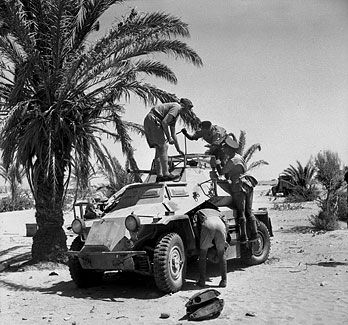 Since the chassis was more robust, the protection increased and a more efficient was used. The effectiveness of the vehicle also improved, despite some limitations in off-road capabilities. The 222 was introduced in 1938 and quickly became the main German armored scout car, largely distributed to Aufklärung Abteilungs (recce squadrons) of SS units, Panzerdivisions and Motorized Infantry Divisions. There were a few in Poland, but more largely represented during the Western campaign and in France. On a good road network they excelled, and were seen many times by Allied soldiers and officers -to their astonishment- well beyond the supposed frontline, creating panic and havoc, thanks to their speed and devastating main gun. The crews soon grew to like this vehicle, although it was somewhat cramped, and often painted non-standard personal emblems and nicknames on the hull, a favor only granted to recce squadrons, which had a strong esprit de corps.
Since the chassis was more robust, the protection increased and a more efficient was used. The effectiveness of the vehicle also improved, despite some limitations in off-road capabilities. The 222 was introduced in 1938 and quickly became the main German armored scout car, largely distributed to Aufklärung Abteilungs (recce squadrons) of SS units, Panzerdivisions and Motorized Infantry Divisions. There were a few in Poland, but more largely represented during the Western campaign and in France. On a good road network they excelled, and were seen many times by Allied soldiers and officers -to their astonishment- well beyond the supposed frontline, creating panic and havoc, thanks to their speed and devastating main gun. The crews soon grew to like this vehicle, although it was somewhat cramped, and often painted non-standard personal emblems and nicknames on the hull, a favor only granted to recce squadrons, which had a strong esprit de corps.
These machines excelled in the Balkans in 1941, but in North Africa, although the Afrika Korps received lots of them, there were complaints about their lack of effective range, due to the limited volume of their fuel tanks. Many additional jerrycans were carried, fitted everywhere on the hull and mudguards. The hull itself received additional storage boxes, which also acted like extra armor. In most cases, an additional rack was fitted to the nose, receiving five more jerrycans. As the war evolved, these were gradually removed from the frontline and replaced by the Sd.Kfz.250/9 half-track (Hanomag), especially in Russia, because of their better range and off-road performance.
A handful (something like 40 to 60) were also sold to the Republic of China in 1939. In many cases, some 222s were seen bringing their firepower to assist infantry on the spot, and were especially efficient against enemy infantry and light vehicles. However, it was vulnerable to the Russian PTRS-41 rifle. Some managed to survive until 1945, affected to police operations and anti-partisan warfare in occupied territories.
Panzerspähwagen (Fu) Sd.Kfz.223
This radio version was based on the 222, but for stability and practical reasons, their large turret was removed and replaced by surplus lighter 221 turrets, which were also shifted backwards. Their trademark was a large, fixed four feet bed-frame aerial antenna, and they combined long and medium range sets of radios. The 223 was produced to an extent of 550 machines by Weserhütte, MNH, Büssing-NAG and Horch from 1935 to January 1944, in two series, differing by their engine, the 8-cylinder Horch 3.5 l or 3.8 l Despite having the same problems -limited all-terrain performance and range- they served on every front until 1945 with Aufsklärung squadrons. A normal provision was one 223 for three 222s.Few Leichter Panzerspähwagens 221/222/223 have survived to this day, but 5-6 remain in private collections, some in running condition, and at least one Czech modern day replica, based on a shortened truck chassis which received a steel frame and welded metal plates, pretty much like the original.
Links
On WikipediaA video of a modern-day Czech reconstruction of a Sd.Kfz.222
Sd.Kfz.222 specifications | |
| Dimensions | 4.8 x 1.95 x 1.70 m (15.9 x 6.5 x 5.7 ft) |
| Total weight, battle ready | 4 tons maximum |
| Crew | 4 |
| Propulsion | Horch 3.5 V8 petrol, 67 kW (90 hp) |
| Speed (on/off road) | 80/40 km/h (50/25 mph) |
| Range | 300 km (186 miles) |
| Production (Sd.Kfz.222 only) | Approximately 1800 |
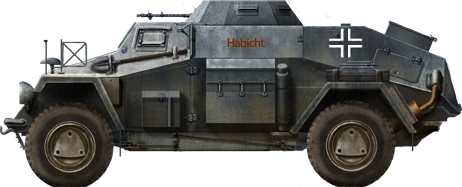
Early Sd.Kfz.221 of the 15th SS Aufklärung Abteilung “LSSAH”, spring 1939. Click to see another from the Aufklärung-Abteilung 3rd SS Panzerdivision “Totenkopf”, Arras sector, northern France, May 1940.
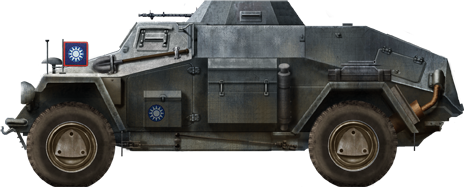
Sd.Kfz.221 of the Chinese Nationalist Army, fall 1940.
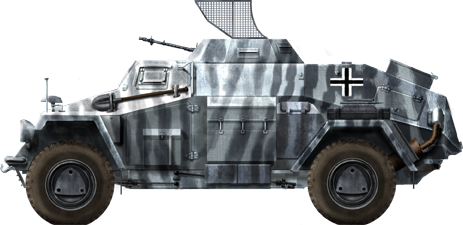
Sd.Kfz.221, Russia, winter 1941-42. Notice the half open anti-grenade screen over the top of the turret.
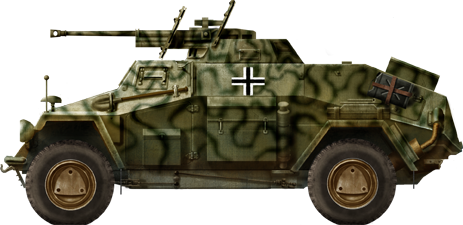
Leichter Panzerspähwagen 221 converted as tank hunter with the Mauser 2.8cm sPzB 41. Some reconnaissance SS unit in the Caucasus, summer 1943.
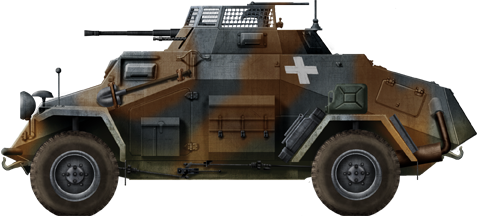
Sd.Kfz.222 from the XXth Motorized Division recce squadron, Poland, September 1939.
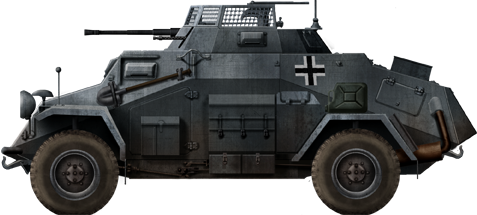
Sd.Kfz.222 from a XVth Panzerdivision recce unit, France, May 1940.
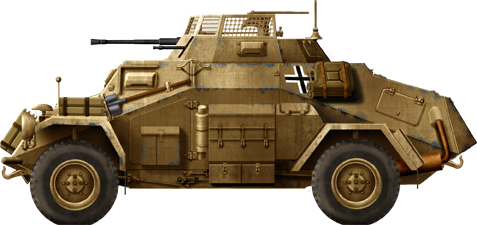
Sd.Kfz.222 of the Deutsche Afrika Korps, recce unit attached to the XXIst Panzerdivision, Libya, fall 1941. These vehicles were criticized for their insufficient range and were literally crammed with fuel jerrycans.
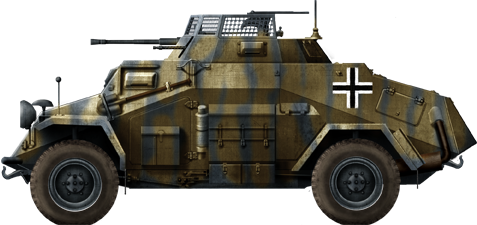
Sd.Kfz.222 on the Eastern Front, summer 1941. The brownish camouflage was applied locally.
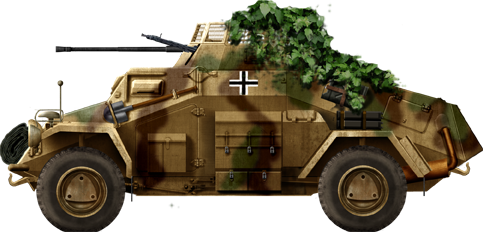
Sd.Kfz.222 from the XXIst Panzerdivision, Caen sector, Normandy, summer 1944. Notice the late KwK 38 long barrel 2 cm (0.79 in) gun and MG 42.
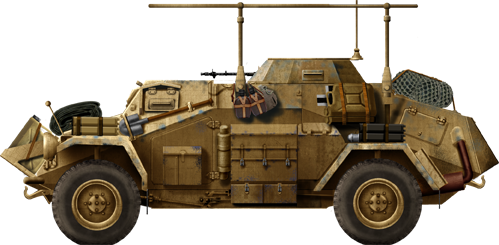
Sd.Kfz.223 Leichter Panzerspähwagen (Fu), the regular radio version, here from a recce squadron attached to the 164th Leichte Afrika Division (former 90th LAD), El Alamein sector, Egypt, fall 1942.
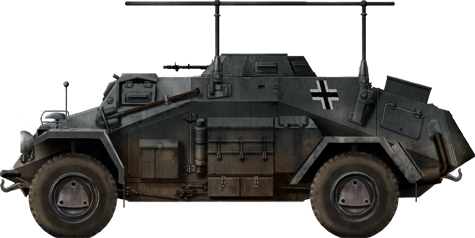
Sd.Kfz.223, Russia, XIIIth Panzerdivision, Operation Barbarossa, summer 1941.
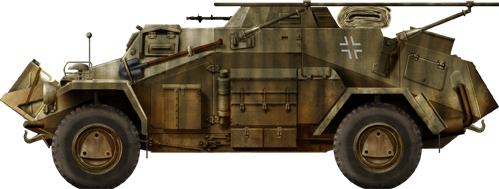
Sd.Kfz.223 in western Ukraine, unidentified SS Aufklärung Abteilung, fall 1943.
Gallery
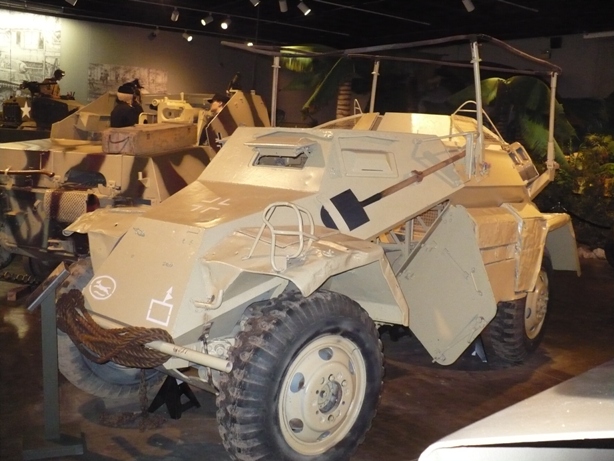

WW2 Tanks




























WW2 tanks posters

All Tiger tanks liveries.

Panther liveries and variants

WW2 Armour - All tanks











Tanks aces and single tanks series

Find more there

Museums, Movies, Books & Games
The Tanks and Armor in pop culture
Tanks and armored vehicles in general are only really grasped when seen first person: The mass, the scale, it's all there. Explore also the way tanks were covered in the movie industry, in books and in video games.Movies:
Best tanks movie on warhistoryonline.com
On imdb.com
On bestsimilar.com/
miltours.com
liveabout.com/
watchmojo.com
Video Games:
pcgamesn.com
historyhit.com
levvvel.com
vg247.com/best-tank-games
mmobomb.com/
alienwarearena.com

